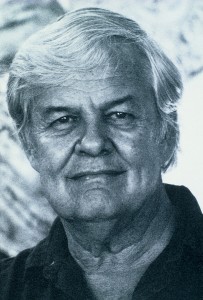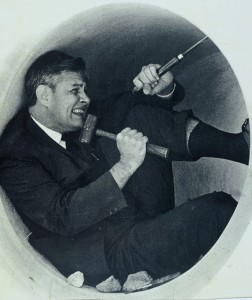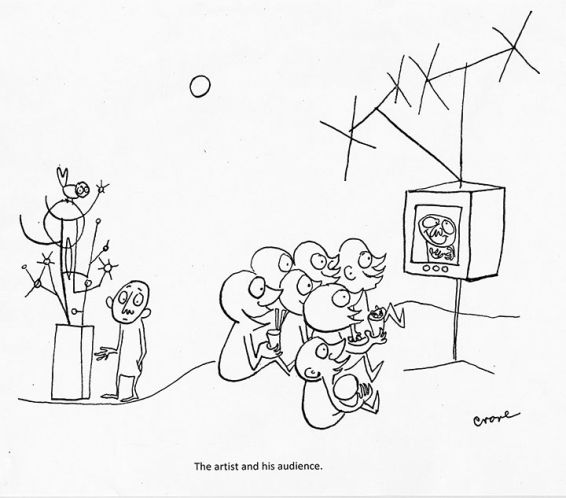Jim Crane and Visual Problem Solving
 I remember Jim Crane’s smile, his humor, his passion for teaching. I did not at the time fully recognize or understand his greatness or the impact he would have on my life. As I connect the dots in retrospect, I now understand that rarely a day goes by in which I do not make use of something I learned from Jim Crane.
I remember Jim Crane’s smile, his humor, his passion for teaching. I did not at the time fully recognize or understand his greatness or the impact he would have on my life. As I connect the dots in retrospect, I now understand that rarely a day goes by in which I do not make use of something I learned from Jim Crane.
The vehicle for Jim Crane’s transmission to me was Visual Problem Solving, the foundation-level art course he created in the 1960s and taught throughout his long career at my undergraduate alma mater Eckerd College. The following is not the summation of his impact as a founding faculty member or as shaper of the philosophy and practice of the Eckerd College art department, but it is for me a wonderful example of his lasting influence.
Like every other art major at Eckerd I took Visual Problem Solving. Like every other student in that class, I was not aware of what I was being taught. I did not realize that with those first 50 sheets of paper, markers and specific instructions, my mind was being fed profound insight and my life equipped with practical tools that would serve with endless variation for the rest of it:
 You do not need to know how you are going to solve a problem in order to effectively solve it. In fact, it is better that you do not know how at the outset. What matters is that you begin and that along the way you remain open to inspiration.
You do not need to know how you are going to solve a problem in order to effectively solve it. In fact, it is better that you do not know how at the outset. What matters is that you begin and that along the way you remain open to inspiration.- Creativity is not improved or aided by absolute freedom. In fact, the key to creativity is limitation. It is creative response to formal constraints that yield the most meaningful results.
- All situations have formal constraints. Creativity, therefore, is required in all things. It is an essential mechanism in life that can be broadly, even universally, applied.
It was a stroke of educational genius delivered kindly and encouragingly by Jim Crane.
Visual Problem Solving, a one-semester course taken 30 years ago, showed me—as no verbal explanation or admonition ever could—how the creative process actually works. It demonstrated this in real time while challenging my creative limits. It was a stroke of educational genius delivered kindly and encouragingly by Jim Crane. I am blessed to have been given this gift, like a transmission of insight from Zen master to wide-eyed disciple.
It sparked in me a slow-burn satori on the essential nature of creativity and I use it every day.

When you are in the midst of it rarely can you recognize what will be a seminal event in your life. Visual Problem Solving, a seemingly innocuous required course, was one of those moments. To paraphrase a classic sentiment, you cannot extend the length of your arms, but you can extend your reach by standing on the shoulders of giants. In my strategic and creative work for clients in the US and abroad, I can say without question that Jim Crane is one of the giants on whose shoulders I stand.


I spent the last week or so with legislators at our state capitol on behalf of arts organizations in Utah. So many of them are focused on STEM (Science Technology Engineering and Math) that they forget how vital our visual problem solving abilities are. These abilities are nurtured and advanced through the visual and performing arts. We encourage a curriculum of STEAM (adding Art to the core). I appreciate your article on Jim Crane and wish his writings or a syllabus were available, with many of his students’ testimonials, to share with legislative bodies as we encourage the breadth of problem-solving opportunities available through visual media and formats.
Thanks James and others of Jim Crane’s students who have shared his message.
*Please send us more!
Dr. Rita R. Wright
Director, Springville Museum of Art (Utah)
Dr. Wright, Thank you for your efforts and your comment.
What a wonderful notion: STEAM.
When I was too young to understand, I was approached by a science professor about entering the sciences. He saw what I then could not: the vital connection between science and art, and how these can combine to help make our world better.
I understand that there have been many discussions on the subject of how to more broadly distribute the essence of the Visual Problem Solving. I do very much like your thought of collecting testimonials of its impact to demonstrate a direct line that connects creativity and many of the things that we regard as essential to life and happiness.
I am headed to Eckerd next weekend and will meet with and share stories with other alumni of Jim’s. I hope something will come of this.
From Radiah Harper:
I totally agree with the three points. I translate it this way:
1. This is what the artist does. He or she begins with materials and perhaps an idea, and through an open process the outcome reveals itself.
2. I often say freedom/creativity without structure is chaos.
3. Creativity is needed in every moment—inside and outside of the box.